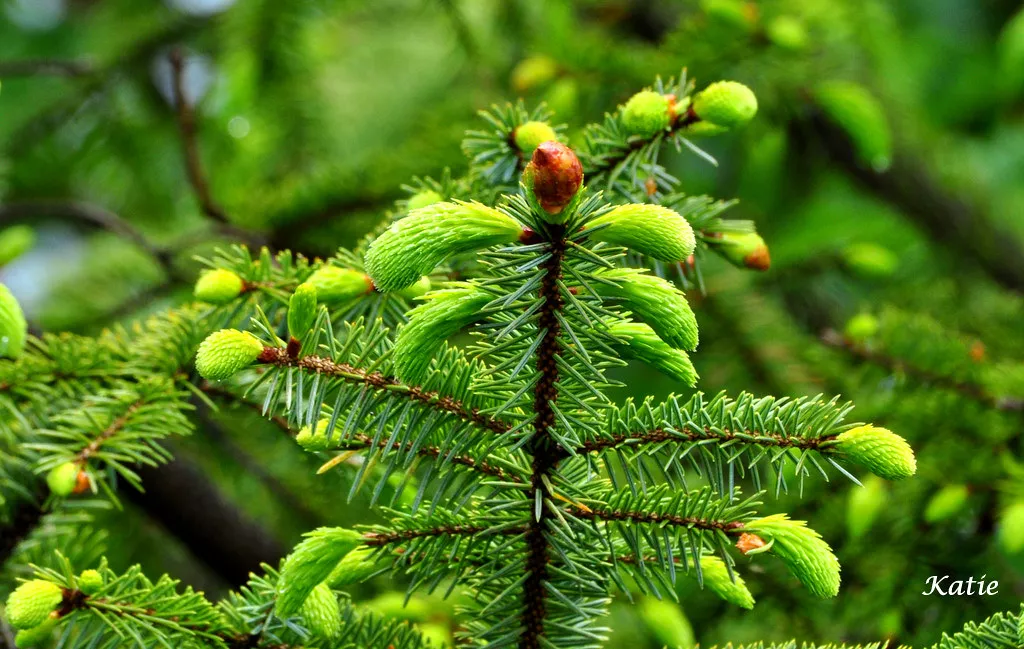Mums, or chrysanthemums, can be perennials if planted and cared for properly. They often survive winter and bloom annually.
Mums are popular flowering plants known for their vibrant colors and variety. These garden favorites can thrive as perennials, returning year after year with the right care. Gardeners must plant them in well-draining soil and provide adequate water. Planting mums in early spring allows their roots to establish before winter.
Mulching helps protect them from freezing temperatures. Pruning spent blooms encourages new growth. By following these steps, you can enjoy beautiful mums in your garden each year. Their resilience and beauty make them a valuable addition to any landscape.

Credit: plantsetcgardencenter.com
Introduction To Mums
Mums, also known as chrysanthemums, are a favorite fall flower. Their vibrant colors and variety make them a garden staple.
A Brief History
Mums originated in China over 2,500 years ago. They were cultivated for their beauty and medicinal properties.
The flower made its way to Japan, where it became a symbol of the Emperor. The Japanese even celebrate “The Festival of Happiness” in honor of mums.
In the 17th century, mums arrived in Europe. They quickly gained popularity and spread to North America.
Popular Varieties
There are many varieties of mums to choose from. Here are some popular ones:
- Single Blooms: These look like daisies with flat petals.
- Pompons: Small, globe-like flowers that are very dense.
- Spider Mums: Have long, thin petals that look like spider legs.
- Anemone: Feature a central cushion surrounded by petals.
- Quill: Tubular petals that give a spiky appearance.
Each variety has its unique charm. They can enhance any garden with their distinct look.
| Variety | Appearance | Best Use |
|---|---|---|
| Single Blooms | Daisy-like, flat petals | Garden borders |
| Pompons | Small, dense globes | Flower arrangements |
| Spider Mums | Long, thin petals | Centerpieces |
| Anemone | Central cushion with petals | Mixed beds |
| Quill | Spiky, tubular petals | Accent plants |
Annuals Vs. Perennials
In the world of gardening, understanding the difference between annuals and perennials is crucial. This knowledge helps in making better choices for your garden’s growth and beauty. In this section, we will explore the key differences and growth cycles of annuals and perennials.
Key Differences
Annuals complete their entire life cycle in one season. They germinate, bloom, seed, and die within a year. Perennials, on the other hand, live for more than two years. They bloom each season after their initial planting year.
Here is a table that highlights the key differences:
| Characteristic | Annuals | Perennials |
|---|---|---|
| Life Cycle | One Season | Several Years |
| Bloom Time | All Season | Seasonally |
| Maintenance | High | Low |
Growth Cycles
The growth cycle of annuals is straightforward. They are planted in spring, grow throughout summer, and die in fall.
- Spring: Germination
- Summer: Full Bloom
- Fall: Seed Production and Death
Perennials follow a different pattern. They take one year to establish roots and foliage. After that, they bloom each year.
- Year 1: Root and Foliage Establishment
- Year 2+: Seasonal Bloom
Understanding these cycles helps in planning your garden better. Choose wisely between annuals and perennials for a beautiful, thriving garden.
Mums As Perennials
Mums, also known as chrysanthemums, are beloved for their vibrant fall colors. Many gardeners wonder, are mums perennials? The answer depends on the type of mums and your climate. Some mums can return year after year, adding beauty to your garden.
Hardy Mums
Hardy mums are the type of mums that can come back every year. They are bred to withstand cold winters. These mums are also known as garden mums or perennial mums. They have a stronger root system and can survive frost.
Hardy mums bloom in late summer to fall. They can survive temperatures as low as -20°F (-29°C). This makes them perfect for cooler climates. With proper care, hardy mums will return each year with more blooms.
Planting Conditions
For mums to thrive as perennials, they need the right conditions. Here are the ideal planting conditions:
| Condition | Details |
|---|---|
| Soil | Well-drained, rich in organic matter |
| Sunlight | Full sun (at least 6 hours daily) |
| Watering | Regular, but avoid waterlogging |
| Spacing | 18-24 inches apart |
Plant mums in early spring for the best results. This allows them to establish roots before the first frost. You can also plant them in the fall, but they may need extra care.
- Mix compost into the soil before planting.
- Water the mums regularly, especially during dry periods.
- Mulch around the plants to retain moisture and protect roots.
Proper care ensures your mums will bloom beautifully each year. Follow these tips to enjoy perennial mums in your garden.

Credit: www.chowdaheadz.com
Caring For Perennial Mums
Perennial mums, also known as garden mums, can thrive year after year. Proper care is essential to keep them healthy and vibrant. Follow these guidelines to help your mums flourish.
Watering Needs
Proper watering is crucial for perennial mums. These plants prefer consistently moist soil but dislike waterlogged conditions. Here are some tips:
- Water mums deeply once a week.
- Ensure the soil is moist to a depth of 6 inches.
- Avoid wetting the foliage to prevent diseases.
- Use mulch to retain soil moisture and reduce evaporation.
Soil Requirements
The right soil is vital for healthy mums. They need well-draining soil rich in organic matter. Check these tips:
- Use soil with a pH of 6.5 to 7.0.
- Incorporate compost to improve soil fertility.
- Avoid heavy clay soils that retain too much water.
- Ensure good air circulation around the roots.
A well-prepared soil bed is the foundation for strong perennial mums. Follow these guidelines to see your garden thrive.
Seasonal Maintenance
Maintaining mums throughout the seasons ensures they thrive year after year. Each season brings specific tasks to keep your mums healthy and vibrant. Let’s dive into the key aspects of seasonal maintenance.
Pruning Tips
Pruning is essential to encourage blooming and maintain shape. In the spring, pinch back new growth when it reaches six inches. This action promotes bushier plants and more flowers.
Throughout the summer, remove spent blooms. This keeps the plant tidy and encourages new blooms. Use clean, sharp shears to prevent disease.
In the fall, cut back mums after the first frost. Trim stems to about six inches above the ground. This helps prepare the plant for winter.
Winter Protection
Winter can be harsh on mums. Proper winter protection ensures they survive and bloom the next season.
- After the first hard frost, mulch around the base of the plant. Use straw, leaves, or evergreen boughs.
- Mulch helps insulate the roots and retains moisture.
- Water mums well before the ground freezes. This prevents root dehydration.
- In areas with severe winters, cover mums with a protective fabric.
Remove mulch in early spring. This allows new growth to emerge.
Common Challenges
Maintaining mums as perennials can be challenging. Gardeners often face issues like pests and diseases. Addressing these challenges helps ensure healthy and vibrant plants.
Pest Control
Mums can attract various pests. These include aphids, spider mites, and caterpillars. Regularly inspect your plants for signs of infestation. Use insecticidal soap or neem oil to combat pests. Avoid over-watering as it can attract pests. Keep the area around your mums clean and free of debris.
Here’s a table of common pests and their treatments:
| Pest | Signs | Treatment |
|---|---|---|
| Aphids | Sticky residue on leaves | Insecticidal soap |
| Spider Mites | Yellow spots on leaves | Neem oil |
| Caterpillars | Holes in leaves | Hand-pick or Bacillus thuringiensis (Bt) |
Disease Prevention
Disease is another common challenge. Mums are prone to fungal infections like powdery mildew and rust. Ensure good air circulation around your plants. Water the base of the plant to keep leaves dry. This helps prevent fungal growth.
Use fungicides if necessary. Here are some common diseases and their prevention methods:
- Powdery Mildew: White powder on leaves. Use a fungicide.
- Rust: Orange spots on leaves. Remove affected leaves.
- Root Rot: Brown, mushy roots. Improve soil drainage.
Keep your mums healthy by rotating them. Avoid planting mums in the same spot each year. This reduces the risk of soil-borne diseases.
Benefits Of Growing Mums
Growing mums offers many benefits. They are beautiful and help the environment. Mums are easy to care for and add value to your garden.
Aesthetic Appeal
Mums are known for their vibrant colors. They bloom in various shades. You can find them in red, yellow, pink, and white. These colors can make any garden look stunning.
They also have a long blooming season. Mums bloom in late summer and last through fall. This makes your garden look lively for a longer time.
| Color | Blooming Season |
|---|---|
| Red | Late Summer to Fall |
| Yellow | Late Summer to Fall |
| Pink | Late Summer to Fall |
| White | Late Summer to Fall |
Environmental Impact
Mums are beneficial for pollinators. Bees and butterflies love them. They help in pollination and keep your garden healthy.
Mums are also low-maintenance plants. They need less water and care. This makes them an eco-friendly choice for gardeners.
- Attract bees and butterflies
- Require less water
- Low-maintenance

Credit: www.chowdaheadz.com
Frequently Asked Questions
Are Mums Perennial Plants?
Yes, mums can be perennials. It depends on the variety and climate. Garden mums are more likely to be perennials.
How Do You Care For Perennial Mums?
To care for perennial mums, water them regularly and ensure they get full sun. Prune back in early spring.
Can Mums Survive Winter?
Mums can survive winter if properly mulched. Hardy varieties are more likely to endure cold temperatures.
When Is The Best Time To Plant Mums?
The best time to plant mums is in early spring. This gives them time to establish roots before winter.
Conclusion
Mums are versatile plants that can be perennials with proper care. Their vibrant colors enhance any garden. Ensure they receive adequate water and sunlight. Mulch them before winter to protect roots. With the right attention, mums will return year after year.
Enjoy the enduring beauty of mums in your garden.



